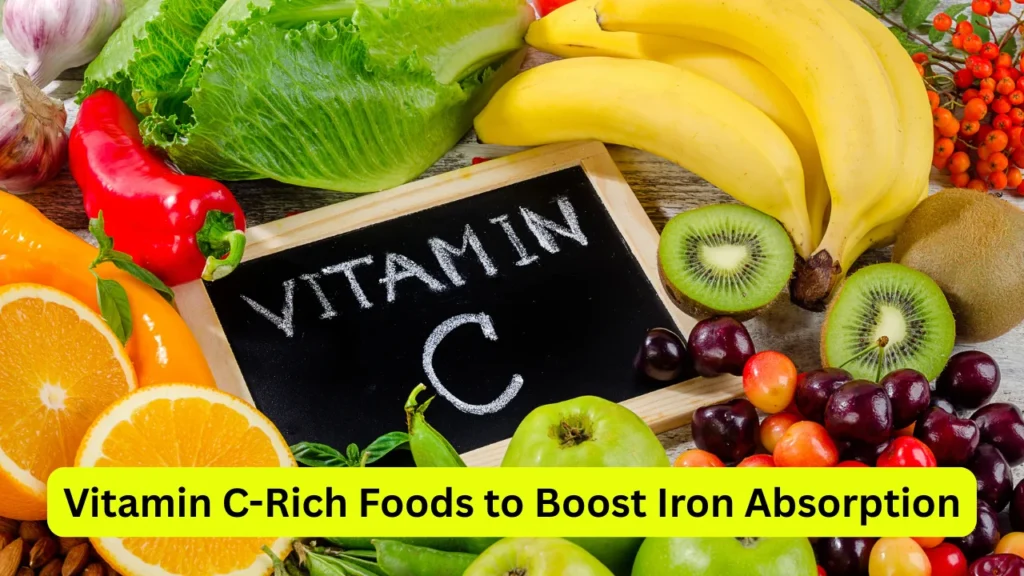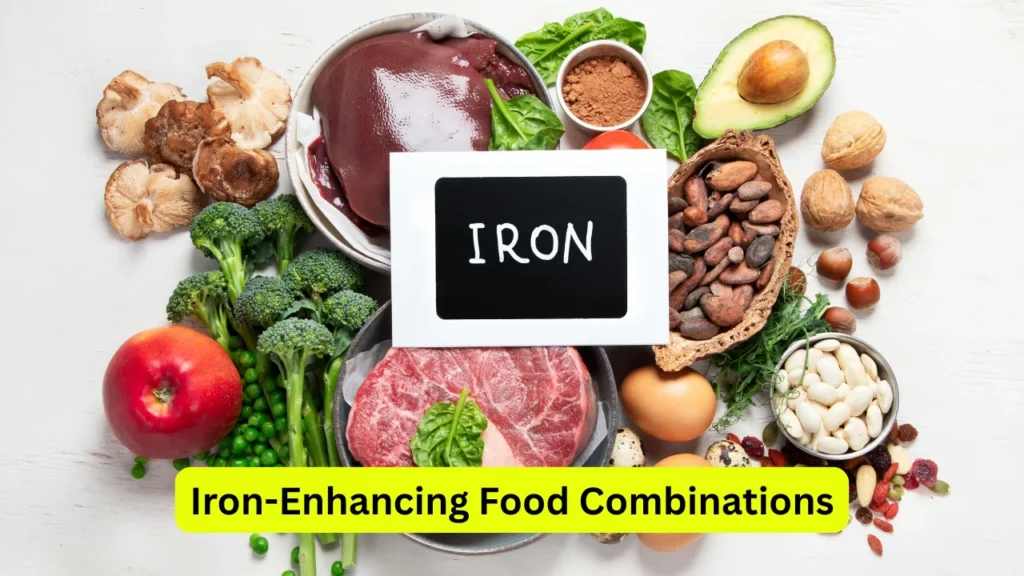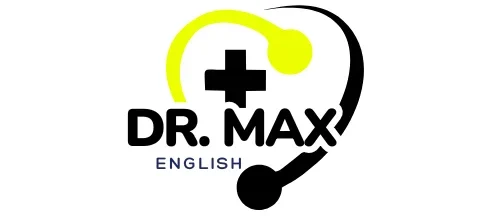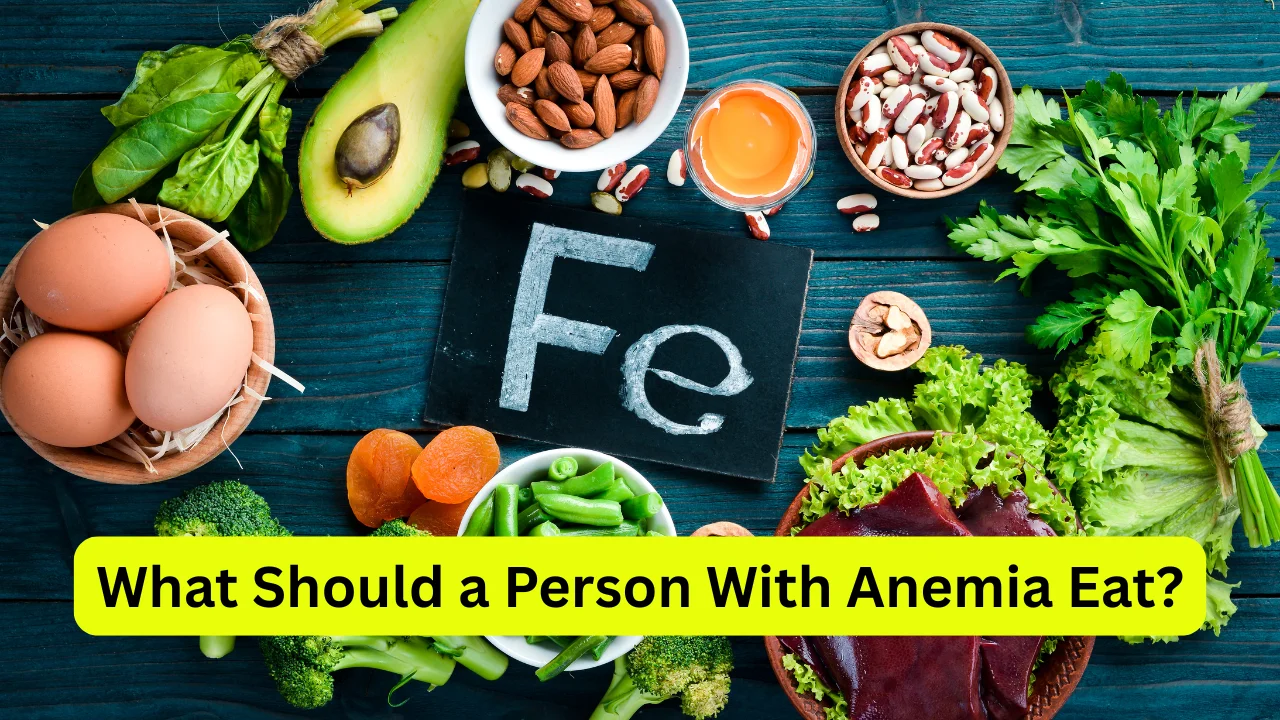Anemia is a common condition that occurs when your body lacks enough healthy red blood cells to carry oxygen to tissues. This can lead to fatigue, weakness, dizziness, shortness of breath, and pale skin. The most frequent cause of anemia is an iron deficiency, though it can also stem from low levels of vitamin B12, folic acid, or certain chronic conditions.
Diet plays a vital role in the prevention and management of anemia. Consuming foods rich in iron, folic acid, vitamin B12, and vitamin C helps the body rebuild red blood cells and restore hemoglobin levels. Understanding what to eat and how to combine foods effectively can make a significant difference in recovery and energy levels.
Understanding the Nutritional Needs of an Anemic Person
When treating anemia through diet, the focus should be on nutrients that help produce red blood cells and increase iron absorption. These include:
- Iron: Essential for hemoglobin production.
- Vitamin C: Enhances iron absorption.
- Vitamin B12: Helps the body form red blood cells.
- Folic Acid: Vital for cell division and red blood cell formation.
- Protein: Supports oxygen transport and overall blood health.
A balanced approach that includes these nutrients in the right proportions can help improve symptoms and overall well-being.
Iron-Rich Foods for Anemia
Iron is the cornerstone nutrient for anemia management. The body uses iron to make hemoglobin — the protein in red blood cells that carries oxygen. There are two main types of dietary iron: heme iron and non-heme iron.
Heme Iron (Easily Absorbed Iron)
Heme iron is found in animal-based foods and is absorbed more efficiently by the body. Including these in your diet can significantly improve iron levels.
- Red Meat: Beef, lamb, and organ meats such as liver are top sources.
- Poultry: Chicken and turkey, especially dark meat, are rich in heme iron.
- Seafood: Oysters, clams, mussels, and sardines are excellent sources that also provide essential omega-3 fatty acids.
Eating a small portion of these foods several times a week can help maintain adequate iron levels, especially in individuals prone to deficiency.
Non-Heme Iron (Plant-Based Iron)
Non-heme iron is found in plant-based foods and fortified products. While it’s not absorbed as efficiently as heme iron, pairing it with vitamin C-rich foods can enhance absorption.
Common sources include:
- Legumes: Lentils, chickpeas, kidney beans, and soybeans.
- Leafy Greens: Spinach, kale, collard greens, and beet greens.
- Nuts and Seeds: Pumpkin seeds, cashews, and sunflower seeds.
- Tofu and Tempeh: Excellent options for vegetarians and vegans.
- Fortified Cereals: Breakfast cereals and oatmeal often contain added iron.
Adding these foods to your daily meals ensures a steady supply of iron, especially for those following a plant-based diet.
Vitamin C-Rich Foods to Boost Iron Absorption

Vitamin C plays a powerful supporting role in anemia treatment. It helps convert non-heme iron from plant sources into a form that the body can absorb more easily. Without sufficient vitamin C, a large portion of dietary iron goes unused.
Best Vitamin C Sources
Adding a variety of vitamin C-rich foods to your diet can make a big difference in iron absorption and overall immune function.
- Citrus Fruits: Oranges, lemons, grapefruits, and mandarins.
- Berries: Strawberries, raspberries, and blackberries.
- Tropical Fruits: Kiwi, papaya, pineapple, and mango.
- Vegetables: Bell peppers, tomatoes, broccoli, and Brussels sprouts.
For best results, include at least one vitamin C-rich food in each meal. For example, squeezing lemon juice over spinach or enjoying an orange after eating fortified cereal can enhance iron absorption naturally.
Vitamin B12 Sources for Red Blood Cell Formation
Vitamin B12 is essential for the production of red blood cells and the proper functioning of the nervous system. A deficiency can cause a specific type of anemia known as pernicious anemia, leading to symptoms like fatigue, numbness, and cognitive difficulties.
Animal-Based Sources of Vitamin B12
Vitamin B12 is primarily found in animal products, making it vital for non-vegetarians to include these in their meals:
- Eggs: Particularly the yolks are rich in B12.
- Dairy Products: Milk, yogurt, and cheese provide a good source.
- Fish: Salmon, tuna, trout, and sardines are rich in both B12 and omega-3 fatty acids.
- Meat: Chicken, turkey, and beef are beneficial for maintaining B12 levels.
Vegetarian and Vegan Options
For those following plant-based diets, it’s essential to find alternative sources or supplements:
- Fortified Foods: Plant-based milk (soy, almond, oat) and nutritional yeast often contain added B12.
- Supplements: Vitamin B12 tablets or injections can help maintain adequate levels under a healthcare provider’s guidance.
Regular intake of vitamin B12 prevents neurological damage and supports overall vitality.
Folic Acid for Healthy Blood Production
Folic acid, also known as vitamin B9, is another vital nutrient for producing and maturing red blood cells. Deficiency can lead to megaloblastic anemia, where red blood cells become abnormally large and inefficient in carrying oxygen.
Natural Sources of Folic Acid
Folic acid can be found in a variety of natural and fortified foods:
- Leafy Greens: Spinach, kale, collard greens, and turnip greens.
- Citrus Fruits: Oranges, lemons, and grapefruits.
- Avocados: Contain both folate and healthy fats.
- Asparagus and Broccoli: Excellent vegetable sources for daily intake.
- Fortified Grains: Bread, cereals, and pasta often contain added folic acid.
Including these foods helps maintain a balance between folate and other essential vitamins necessary for blood cell development.
Iron-Enhancing Food Combinations

Certain food pairings can maximize nutrient absorption. Knowing how to combine foods smartly can help make every meal more effective for treating anemia.
Examples of Effective Combinations
- Spinach with Lemon Juice: The vitamin C in lemon boosts non-heme iron absorption from spinach.
- Lentil Soup with Tomatoes: The acidity of tomatoes enhances iron uptake from lentils.
- Fortified Cereal with Strawberries or Orange Slices: A simple breakfast combination that strengthens both iron and vitamin C levels.
- Grilled Chicken with Steamed Broccoli: Provides heme iron along with additional vitamin C for better absorption.
Planning meals this way allows your body to get the maximum benefit from the nutrients consumed.
Foods and Substances to Limit or Avoid
Some foods can interfere with iron absorption or contribute to nutrient loss. Managing these helps ensure that dietary efforts to treat anemia are effective.
Common Foods That Inhibit Iron Absorption
- Caffeine: Coffee and tea contain polyphenols that reduce iron absorption.
- Calcium-Rich Foods: Milk, cheese, and yogurt can block iron uptake when consumed with iron-rich meals.
- Red Wine: Contains tannins that bind to iron and prevent absorption.
- Whole Grains (in excess): Phytates in whole grains can bind to iron, though soaking or fermenting grains reduces this effect.
It’s best to avoid drinking tea or coffee immediately before or after a meal and to consume calcium-rich foods separately from iron sources.
Role of Protein in Anemia Recovery
Protein is another essential component for maintaining healthy blood. Hemoglobin itself is a protein molecule, and a diet low in protein can limit the body’s ability to produce it.
Protein Sources to Include
- Animal Proteins: Eggs, chicken, beef, fish, and dairy.
- Plant Proteins: Lentils, beans, tofu, quinoa, and nuts.
Combining different protein sources ensures a complete amino acid profile, which supports both blood health and muscle recovery.
Hydration and Balanced Eating Habits
Maintaining proper hydration is critical for people with anemia. Water aids in nutrient transport, oxygen circulation, and detoxification. Aim for at least 8–10 glasses of water daily, adjusting based on climate and activity level.
Balanced eating means consuming a variety of foods from all food groups — not just focusing on iron alone. Incorporate fruits, vegetables, lean proteins, whole grains, and healthy fats to maintain overall body strength and immune health.
Lifestyle Tips to Complement an Anemia-Friendly Diet
Diet alone may not completely reverse anemia, especially if it’s caused by chronic disease or severe deficiencies. However, certain lifestyle changes can help enhance the benefits of a nutritious diet.
Key Recommendations
- Eat Regularly: Avoid skipping meals to maintain steady energy levels.
- Cook in Cast Iron: Cooking in iron pans can increase the iron content of foods slightly.
- Avoid Overcooking: Excessive heat destroys vitamins like C and folate; opt for steaming or light sautéing.
- Take Iron Supplements if Prescribed: Always consult a doctor before taking supplements to avoid excess iron buildup.
- Exercise Moderately: Gentle physical activity like walking or yoga improves blood flow and oxygenation.
- Monitor Progress: Regular blood tests help track hemoglobin levels and adjust the diet accordingly.
Sample Daily Meal Plan for Anemia
Here’s an example of how to build a day’s meals that support iron intake and absorption.
Breakfast:
Fortified cereal topped with strawberries and a glass of orange juice.
Mid-Morning Snack:
Handful of pumpkin seeds and a kiwi.
Lunch:
Grilled chicken with sautéed spinach and brown rice, drizzled with lemon juice.
Evening Snack:
A boiled egg and a handful of almonds.
Dinner:
Lentil soup with tomatoes, whole-grain bread, and a side of steamed broccoli.
Before Bed:
A warm glass of fortified plant-based milk (if needed for B12).
This meal plan provides a balanced mix of iron, vitamins, and protein to support red blood cell production and energy restoration.
Final Thoughts
Anemia can often be managed effectively with the right dietary changes. Prioritizing foods rich in iron, vitamin B12, folic acid, and vitamin C is essential for rebuilding red blood cells and maintaining healthy hemoglobin levels. Understanding which foods to combine and which to limit allows your body to absorb nutrients more efficiently.
By following a nutrient-rich, balanced diet and adopting healthy lifestyle habits, individuals with anemia can regain strength, vitality, and improved overall well-being.

Dr. Max is a dedicated medical professional with extensive experience in health and wellness. His approach blends clinical expertise with the latest research, offering practical insights to help individuals lead healthier, more balanced lives.

